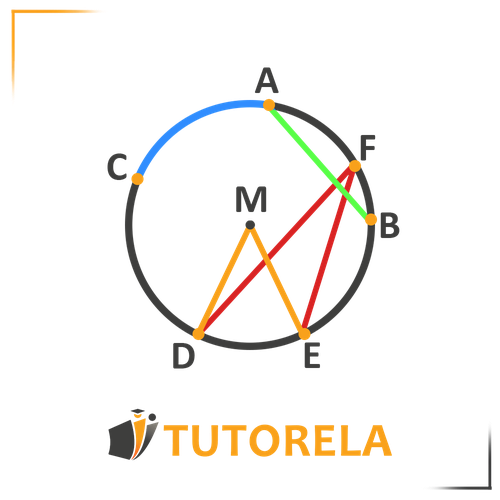
chord
arc
central angle is times larger than inscribed angle – both intercepting the same arc

chord
arc
central angle is times larger than inscribed angle – both intercepting the same arc

A point whose distance from the center of the circle is _______ than the radius, is outside the circle.
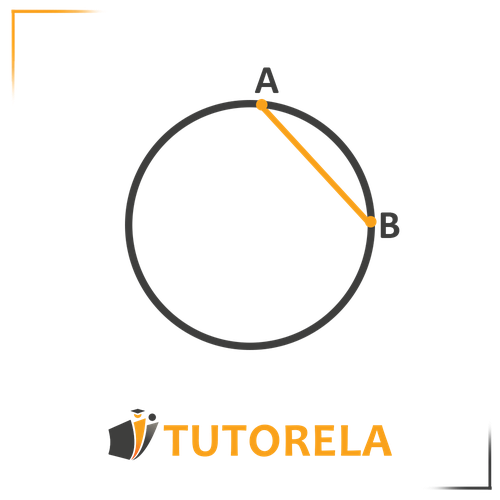
A chord in a circle is a straight line that passes through the circle and connects any 2 points located on the circle.
Remember: The chord passes through the circle and not on it.
Is a radius a chord?
Absolutely not. A radius connects a point outside of the circle to the center point of the circle. A chord, on the other hand, connects 2 points on the circle.
Is a diameter a chord?
Yes! A diameter connects 2 points on the circle. In fact, the longest chord in a circle is called a diameter!
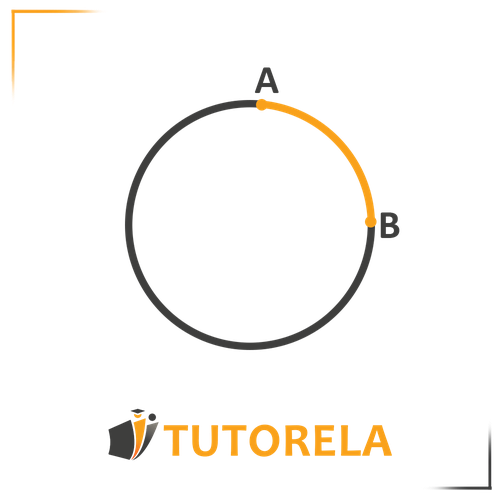
An arc in a circle is part of the circle's circumference and does not pass through the circle.
An arc is essentially the part between any 2 points on the circle and its shape is like a rainbow.
The arc can be small, large, or even almost the entire circumference of the circle.
Note - it does not pass through the circle like a chord.
Let's see an example of arcs in a circle:
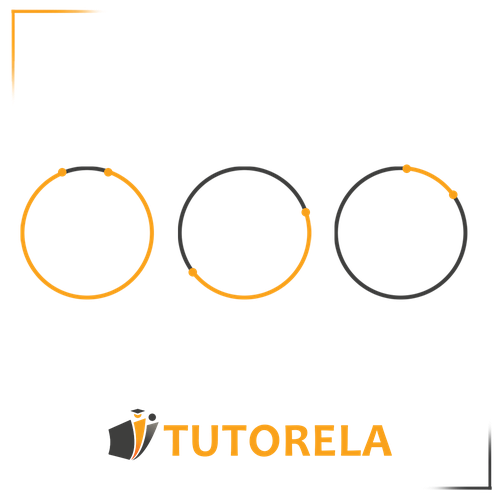
Identify which diagram shows the radius of a circle:
Identify which diagram shows the radius of a circle:
In which of the circles is the point marked inside of the circle and not on the circumference?
A central angle in a circle is an angle whose vertex is at the center of the circle and its rays are radii of the circle.
In other words, if we draw 2 radii - 2 straight lines, we create an angle called a central angle.
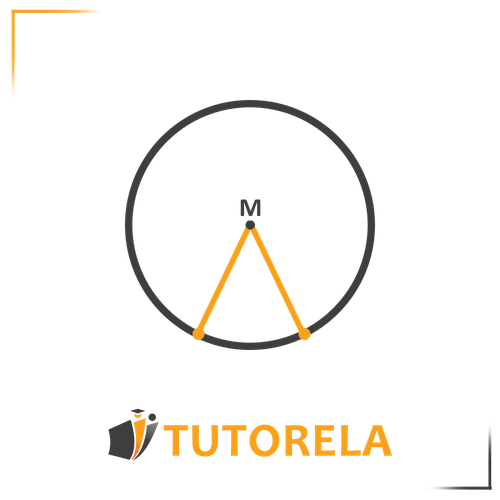
We can determine that central angles are equal when:
Case 1:
If the angles are subtended by equal arcs, we can determine that the central angles are equal.
Similarly, we can determine that if the central angles are equal, their corresponding arcs are also equal to each other.
or
Case 2:
If the chords opposite to the angles are equal, we can determine that the central angles are equal.
Similarly, we can determine that if the central angles are equal, their corresponding chords are also equal to each other.
The relationship between the central angle and the inscribed angle in a circle:
In a circle, the central angle is twice the size of the inscribed angle that intercepts the same arc.
Alternatively, the inscribed angle is equal to half of the central angle that intercepts the same arc.
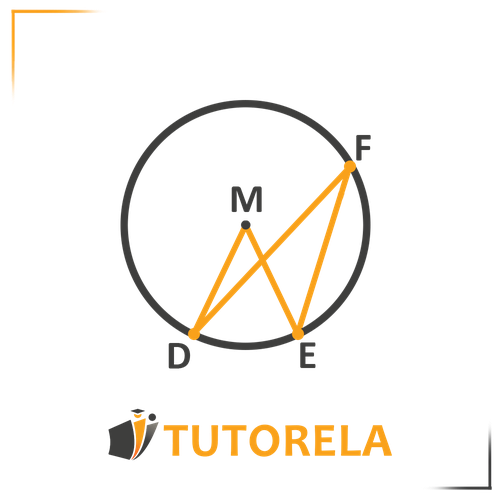
Angle is 2 times larger than angle
A perpendicular to a chord is a straight line that extends from the center of the circle to the chord.
The perpendicular bisects the chord into two equal parts and creates a right angle between the perpendicular and the chord.
Additionally, the perpendicular bisects the central angle that subtends the chord into two equal parts and bisects the arc opposite the chord into two equal parts.
Similarly, we can say that if a straight line extends from the center of the circle and bisects a chord, it will be perpendicular to that chord.
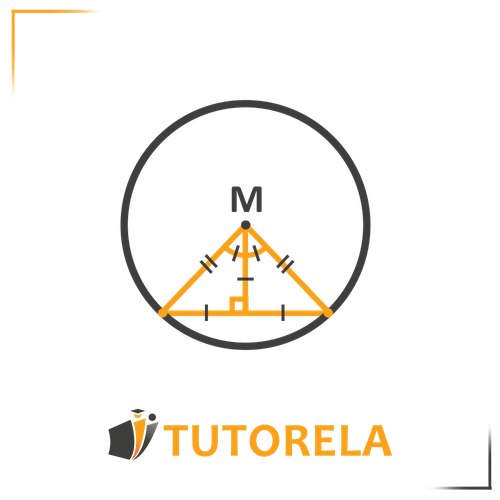
The distance of a chord from the center of the circle is the length of the perpendicular line connecting the center of the circle to the chord.
• Chords that are equal in length are at equal distances from the center of the circle.
• If the distance of a chord from the center of the circle is smaller than the distance of another chord from the center of the circle, then we can determine that the chord with the smaller distance is longer than the other chord.
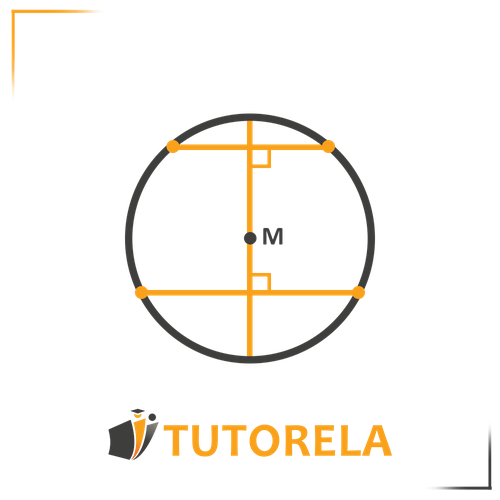
Is it correct to say:
'the circumference of a circle'?
Where does a point need to be so that its distance from the center of the circle is the shortest?
Calculate the area of the section painted red given that the area of the circle is 12.
An inscribed angle in a circle is an angle whose vertex is on the circumference of the circle - meaning on the circle and not inside it, and its rays are chords of the circle.
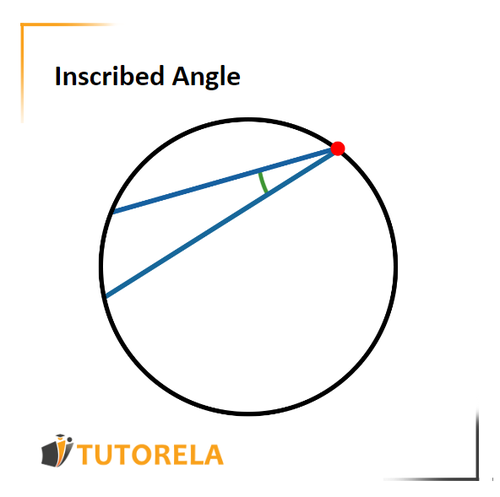
Inscribed angles that are based on the same chord from the same side are equal inscribed angles.
and
Equal inscribed angles are opposite to equal chords and equal arcs.
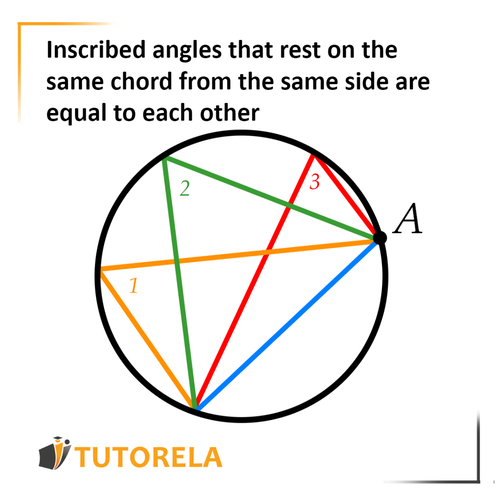
A tangent to a circle is a line that touches the circle at one point and is perpendicular to the radius at the point of tangency.
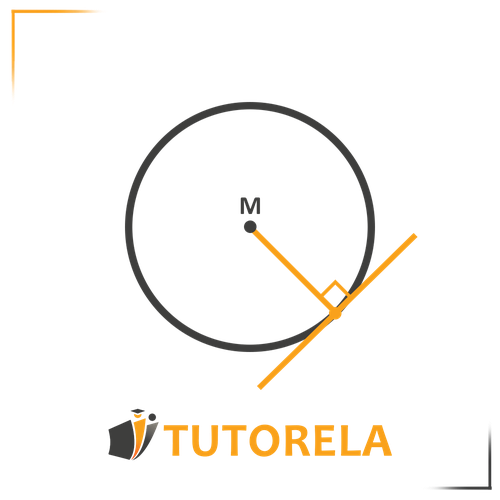
• The angle between a tangent and any chord equals the inscribed angle subtending the same chord
from the other side.
• Two tangents to a circle drawn from the same point are equal in length.
• The line segment connecting the center of the circle to the point from which two tangents are drawn
bisects the angle between the tangents.
• If from a point outside the circle, a tangent and a secant are drawn, then the product of the entire
secant and its external part equals the square of the tangent.
• In a triangle circumscribing a circle, the three angle bisectors of the triangle intersect at a single
point at the center of the circle.
Calculate the length of the arc marked in red given that the circumference is 12.
Calculate the length of the arc marked in red given that the circumference is 12.
Calculate the length of the arc marked in red given that the circumference is 36.
A point whose distance from the center of the circle is _______ than the radius, is outside the circle.
Let's remember that the circle is actually the inner part of the circumference, meaning the enclosed area within the frame of the circumference.
Therefore, a point whose distance is greater than the center of the circle will necessarily be outside the circle.
greater
Identify which diagram shows the radius of a circle:
Remember that a radius is a line segment connecting the center of the circle to a point that lies on the circle itself.
In drawing A, the line doesn't touch any point on the circle itself.
In drawing B, the line doesn't pass through the center of the circle.
We can see that in drawing C, the line that extends from the center of the circle is indeed connected to a point on the circle itself.
Identify which diagram shows the radius of a circle:
Remember that a radius is a line segment connecting the center of a circle to any point on the circle itself.
In drawing C we can see that the line coming from the center of the circle indeed connects to a point on the circle itself, while in the other drawings the lines don't touch any point on the circle.
Therefore, C is the correct drawing.
In which of the circles is the point marked inside of the circle and not on the circumference?
Let's remember that the circular line draws the shape of the circle, and the inner part is called a disk.
Therefore, in diagram B, the point is located in the inner part, meaning inside the disk.
Where does a point need to be so that its distance from the center of the circle is the shortest?
Let's remember that the circle is actually the inner part of the circumference, meaning the enclosed area within the frame of the circumference.
Therefore, a point whose distance is less than the radius from the center of the circle will necessarily be inside the circle.
Inside